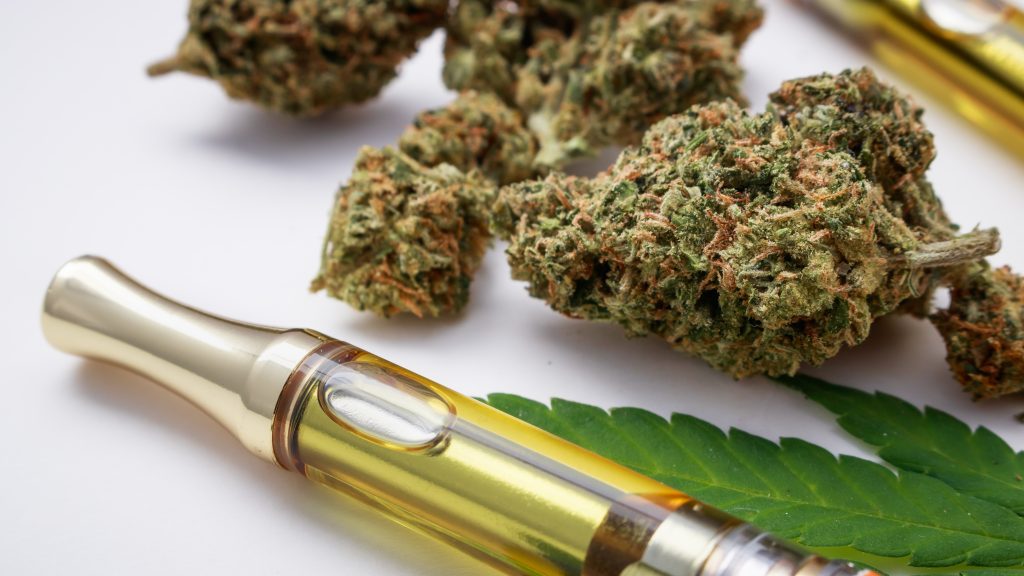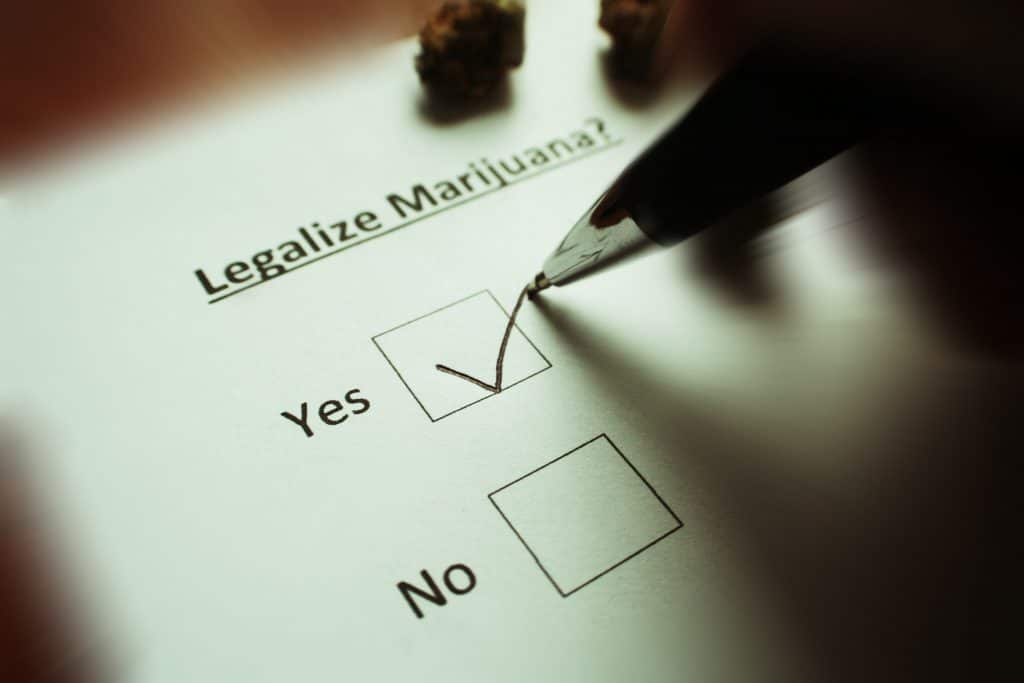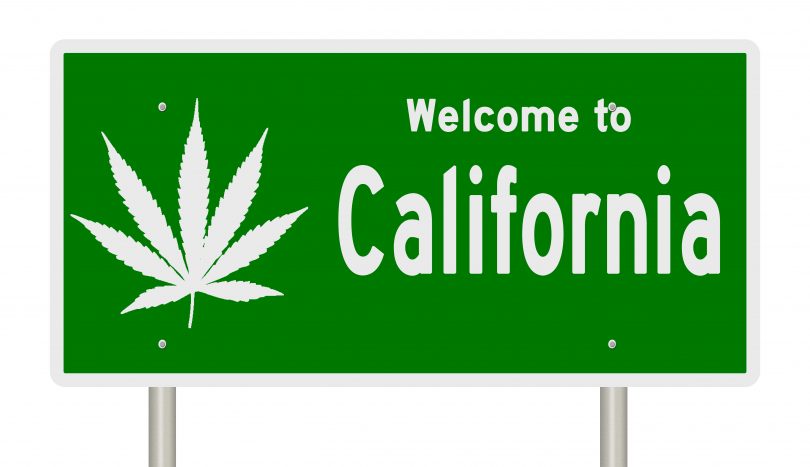One thing that is sorely lacking from California’s cannabis industry is consistency. Starting with statewide pot shortages just a couple of years ago, to a $100 million bailout last year, and now insane levels of overproduction that are driving market prices into the dirt – it seems that California keeps overcorrecting at every turn, and the ‘Golden State’ just can’t seem to get it right.
A sharp rise in cannabis production to make up for prior deficits is having worrisome impacts on the state’s industry, especially in the cultivation and wholesale sectors. According to numerous California farmers, flower prices are dropping substantially and on the retail side of things, concentrates and vape carts are cheaper than they have ever been. Some products and markets seem to be on better footing, but others may be in hot water.
In California, things are often complicated and convoluted – but this is especially true of the state’s cannabis industry. Check back with us to see how it all unfolds. For more articles like this one, and exclusive deals on vapes, edibles, tinctures, and more, make sure to subscribe to The THC Weekly Newsletter! We’ve also got great deals on cannabinoids like HHC-O, Delta 8, Delta 9 THC, Delta-10 THC, THCO, THCV, THCP & HHC , which you can find by checking out our “Best-of” lists!
Current state of affairs, indoor vs outdoor, top shelf vs mids
Although it does vary quite a bit regionally, we’re getting reports that wholesale prices are down about 60% for outdoor-farmed flower and roughly 10-20% for indoor and light-deprivation crops. In Northern California, for example, costs are shockingly low, averaging $200-500 for outdoor and $600-800 for indoor and light-deprivation. This down from $800-1000 and $1300-$1600, respectively, just last year.
“We are seeing flower prices in CA across a broad range, with most transactions within $550 to $3,350 per pound; with a roughly $400 spread between outdoor and greenhouse, and a roughly $700 spread between greenhouse and indoor,” New Leaf Data CEO Jonathan Rubin wrote in an interview with MJBizDaily.
“What I am hearing is … any sort of outdoor product from last year is absolutely not moving at all, and if it is moving, the price point is as low as $275 to $500 max,” said another industry insider from Mendocino County, who requested their identity be withheld. “The market is super-flooded,” the source said. “There’s a huge glut. Nothing is moving. … Talking to the old-, old-timers, no one has ever seen it this bad. And it’s on both sides, the white and black (markets).”
But down in Southern California, the situation seems a bit more stable; for now anyway, and for those growing indoor flower. Scott Raquiza, chief cannabis officer at Cream of the Crop Gardens in Perris, California, says that from what he has seen, indoor farmers are faring well at the moment, but anyone growing mids or bottom shelf buds “could be in serious trouble”.
There’s definitely price compression happening compared to what pounds were fetching on the wholesale market in 2020,” Raquiza continued. “For commercial grows, non-AAA, you’re probably at a 40% price compression. Outdoor is 50%-60% price compression, and premium indoor is only 10-20% price compression,” he added.
But it’s not just flower, prices for concentrates and carts are crumbling as well. LeafLink, an online wholesale platform for the industry, has been tracking the prices from 1,128 retailers since 2017. According to their Wholesale Cannabis Pricing Guide for 2022, the biggest year-over-year price drop was for cartridges, but they reported “consistently low pricing across most categories”.
It makes sense… because if farmers are having a hard time selling flower to anyone with the intent of reselling it, their next best option is to sell it at a low, bulk price to processors who can turn it into concentrates, which in turn drives down prices in the concentrate market as well.
What about retail pricing?
Although it does take a bit longer for these effects to trickle down to consumers, I and many others have seen a difference in dispensary pricing. Again, it varies by region, but I’ve noticed that prices for most products are lower to some degree, some only slightly (top-shelf bud) but other items dropped significantly (live resin carts).

What initially caught my attention was some quick product research I did last week in preparation for my trip to California for the Emerald Conference. I was scrolling through Weedmaps looking for dispensaries near the convention that sell the brands that I like. The search results left with sticker shock in the best possible way.
Not only were the carts I use considerably cheaper than they were last time I visited, but they’re about one-quarter of the price that I pay for the same exact brand at dispensaries in Illinois. For example, I was able to find a huge variety of full gram live resin carts for $30-40 each, whereas in Illinois I’m paying about $60 for just a half-gram!
For the most part, I looked around San Diego, San Bernardino, and Riverside counties, since that’s where I plan to be, but a quick search of Los Angeles and Bay Area dispensaries yielded similar pricing. However, because I so rarely shop in those areas, I don’t really have a baseline to compare that too. When I was at MJBizCon in October, I was told that it was difficult to find good quality flower in the Bay Area for less than $200/ounce, but that does not seem to be the case anymore.
Too much pot!
It’s all basic economics and at the root of the problem is a supply and demand issue. There is no foreseeable decline in demand for cannabis products in the near future, more people are using pot products every day. But as the industry grows and everyone scrambles to get their foot in the door, competition is incredibly fierce, and it causes the supply chain to get completely out of whack. What we’re left with is more pot than anyone can realistically sell.
“California farmers are producing four to five times more cannabis than our legal market can consume,” says Humboldt County Growers Alliance executive director Natalynne DeLapp. “Simple supply and demand demonstrates that when your supply outpaces your demand, the prices go down. And now, the question of survivability is in question.”
As of last month, there are 1,775 acres of California land that are zoned and licensed for cannabis cultivation, 435 of which are in Humbolt County, known as the epicenter of the West Coast’s cannabis production. The county has surpassed 6 million pounds of flower grown annually. Now keep in mind, that is only 24% of the state’s allocated cultivation land. Another area somewhat known for weed growing is the Coachella Valley. There are dozens of cultivation facilities in and around Desert Hot Springs, all of which can produce anywhere from 6,000 to 40,000 pounds of cannabis annually.
All that said, Californians, as pot-friendly as we are known to be, only consume about 2.5 million pounds of cannabis every year. This is a rough estimate, but regardless, when we factor in all the unlicensed grow ops, it becomes obvious that the Golden State is quite literally, drowning in pot.
“The bulk of this overproduction is attributable to large-scale farms outside the Emerald Triangle, on the Central Coast and elsewhere, where it’s common for single farms to be permitted for dozens of acres,” added DeLapp. “These areas are continuing to bring hundreds of acres of new production online despite the fact that there’s no market for new large-scale production.”
How did this happen?
It’s difficult to fully comprehend how California got to this point without understanding some key things about California’s complicated history with cannabis. Back in 1996, the state passed Proposition 215, also known as the Compassionate Use Act. The goal was to legalize cultivation, possession, and use of cannabis for medicinal purposes, but the program remained largely unregulated and over the years, it became very recreational.
To remedy the somewhat out of control situation, then-Governor Jerry Brown signed the Medical Marijuana Regulation Safety Act into law in October 2015. At the same time, Humbolt County was drafting the state’s first land use ordinance to prep for impending legalization by zoning certain areas for cultivation.
By August 2016, over 2,500 growers had registered their farms with the county and were working the steps to becoming state-compliant. When Proposition 64 passed in November 2016 and cannabis was legalized recreationally, the state also made promises to end the cultivation cap by 2023. That means that California is looking at possibly unlimited cannabis cultivation as soon as next year. To add to the problem, the state also plans to allow even larger “Type 5” cultivation licenses to be issued in 2023 also.
“When that acreage cap was eliminated, it allowed CDFA to start accepting stacked licensing which is what allowed for these very, very large farms to come online,” says DeLapp. “When we’re asking why there is an overproduction problem it is because of Prop. 64 and the removal of the acreage cap that failed to rein cannabis production in the state of California.”

Many longtime growers, like Jason Gellman, owner and operator of Ridgeline Farms in Southern Humboldt County, fear the industry as we know it, might be on its way out the door. “We got to hold the line on prices, there has to be a cap on square footage or a cap on licenses,” he said. “If the state allows unlimited cultivation come in 2023, we can just kiss this industry goodbye but right now we still have a fighting chance.”
No end in sight
Because of all the caveats mentioned above, many industry experts believe this trend will continue for months, possibly years. It’s already to the point that farmers are sitting on pounds of flower that they simply cannot move, so when their corps are ready this year, they’re not anticipating to see an early harvest price bump that has been commonplace in years prior.
Jonathan Rubin, Founder and CEO of Cannabis Benchmarks, said that in addition to other legal markets are seeing significant drops in wholesale pricing as well, especially Oregon, Washington, and Colorado. “For the West Coast states, there was a significant amount of inventory that remained unsold deep into this year from a big outdoor harvest in 2020, and in California, it seems that 2020 and 2021’s harvests were similarly robust,” he stated.
Rubin continued: “Additionally, cultivators that had spent previous years getting through the state’s stringent licensing process came online and started producing this year, including larger light deprivation operations outside of northern California, and generated a surge of supply beginning this summer, which caused prices to start to fall ahead of the autumn crop.”
A solid number of California sources, as well as a handful from the Pacific Northwest, agree that prices are likely to continue dropping. “I expect it to continue to go down, as we get closer to the start of the fall harvest,” said Adrian Sedlin, the CEO of Santa Barbara-based Canndescent, a large commercial grower with multiple locations throughout the state.. “We’re going to start from a lower place than we have in a while, and … it’s going to be interesting to see how people play it, when we get to November-December, and what are people going to do with their product?”
Of particular concern is the well-being of smaller, craft and homestead operations that don’t have the means to compete with largescale factory farms. “I think there are going to be a lot of farmers that this is not sustainable for,” said Gordon from HCGA. “Most people are buckling in and looking at the next two to three years – before we have interstate commerce – and saying, ‘How can we get through this? Can we operate at a loss for two to three years at a loss?’” he added.
Conclusion
It’s hard to think of too much pot as ever being a bad thing, but when it comes to selling weed, it’s certainly not easy to be operating in an oversaturated market. Unfortunately, it seems there is no end in sight, and California cannabis businesses are in for a wild ride.
Welcome all! Thanks for stopping by CBDtesters.co, the preeminent internet location for the most important and thought-provoking cannabis and psychedelics-related news globally. Visit us regularly to stay on-top of the fast-paced world of legal drugs and industrial hemp, and remember to sign up for The THC Weekly Newsletter, so you’re sure to never miss a story.
Disclaimer: Hi, I’m a researcher and writer. I’m not a doctor, lawyer, or businessperson. All information in my articles is sourced and referenced, and all opinions stated are mine. I am not giving anyone advice, and though I am more than happy to discuss topics, should someone have a further question or concern, they should seek guidance from a relevant professional.









